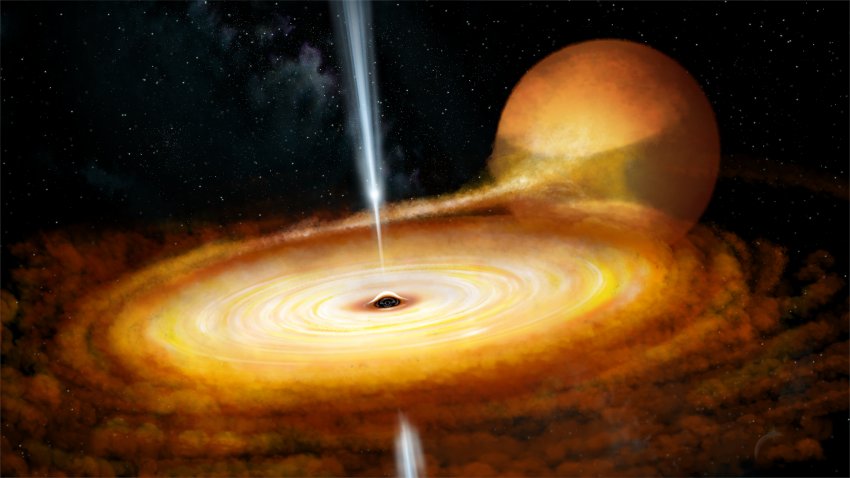MAXI J1820+070: Violent Flaring Revealed At The Heart Of A Black Hole System
Eddie Gonzales Jr. – MessageToEagle.com – An international team of astronomers, led by the University of Southampton, used state-of-the-art cameras to create a high frame-rate movie of a growing black hole system at a level of detail never seen before.
In the process, they uncovered new clues to understanding the immediate surroundings of these enigmatic objects.
 Illustration of the MAXI J1820+070 Black Hole. Credit John Paice
Illustration of the MAXI J1820+070 Black Hole. Credit John Paice
Black holes can feed off a nearby star and create vast accretion discs of material. Here, the effect of the black hole’s strong gravity and the material’s own magnetic field can cause rapidly changing levels of radiation to be emitted from the system as a whole.
This radiation was detected in visible light by the HiPERCAM instrument on the Gran Telescopio Canarias (La Palma, Canary Islands) and in X-rays by NASA’s NICER observatory aboard the International Space Station.
The black hole system studied is named MAXI J1820+070, and was first discovered in early 2018. It is only about 10,000 lightyears away, in our own Milky Way. It has a mass of about 7 Suns, with this collapsed down to a region of space smaller than the City of London.
Investigating these systems is usually very difficult, as their distances make them too faint and too small to see – not even using the Event Horizon Telescope, which recently took a picture of the black hole at the center of the galaxy M87. The HiPERCAM and NICER instruments, however, let the researchers record ‘movies’ of the changing light from the system at over three hundred frames per second, capturing violent ‘crackling’ and ‘flaring’ of visible and X-ray light.
“The movie was made using real data, but slowed down to 1/10th of actual speed to allow the most rapid flares to be discerned by the human eye,” John Paice, a graduate student at the University of Southampton and the Inter-University Centre for Astronomy & Astrophysics in India, said in a press release.
“We can see how the material around the black hole is so bright, it’s outshining the star that it is consuming, and the fastest flickers last only a few milliseconds – that’s the output of a hundred Suns and more being emitted in the blink of an eye.”
Researchers also found that dips in X-ray levels are accompanied by a rise in visible light (and vice-versa). And the fastest flashes in visible light were found to emerge a fraction of a second after X-rays. Such patterns indirectly reveal the presence of distinct plasma, extremely hot material where electrons are stripped away from atoms, in structures deep in the embrace of the black hole’s gravity, otherwise too small to resolve.
Written by Eddie Gonzales Jr. – MessageToEagle.com Staff










